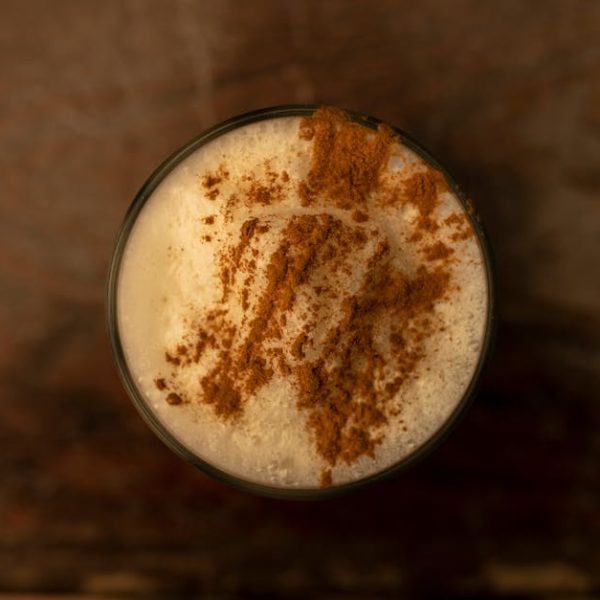Contrary to popular belief, unopened soy milk isn’t immortal in your pantry. The shelf life varies depending on specific factors, such as packaging and storage conditions. Generally, unopened soy milk in a sealed, aseptic Tetra Pak can last for 6 to 12 months at room temperature. However, be sure to always check the best before date on the packaging, as it is the most accurate indicator of its shelf life.
To avoid an unfortunate surprise, here’s a simple guideline to ensure your soy milk is still fresh:
- Check packaging for bloating. This could be a sign of bacterial activity.
- Examine the soy milk for consistent color and texture.
- Give it a sniff. A sour smell often indicates spoilage.
The Effects of Proper Storage on Soy Milk’s Durability
The longevity and freshness of soy milk are directly impacted by your storage method. Storing it in cool, dark places away from direct sunlight and heat can significantly extend its shelf life. Stash your unopened soy milk in a pantry; its aseptic packaging allows it to stay fresh without refrigeration until it’s opened.
Here’s a pro tip: ☑️ Always remember to refrigerate your soy milk once it’s opened. These optimal conditions can keep your soy milk fresh for 7 to 10 days post-opening.
Identifying Spoiled Soy Milk: Signs and Precautions
Recognizing the signs of spoiled soy milk is crucial to avoid the unpleasant experience, and potentially detrimental health risks, of consuming expired or spoiled soy milk. The common signs include a change in color, texture or smell, and curdling.
| Signs of Spoilage | Potential Cause |
|---|---|
| Change in color | Natural oxidation |
| Change in texture | Separation and/or bacterial growth |
| Curdling | Souring or fermentation |
| Off-putting smell | Bacterial growth |
Remember, when in doubt, it’s always safer to throw it out!
Handling Opened Soy Milk: Shelf Life and Safe Consumption
Once opened, soy milk needs to be treated much like traditional dairy milk. Ideally, it should be consumed within 7 to 10 days. However, maintaining good storage habits can help push that limit. Always keep the opened soy milk refrigerated and sealed tightly. If possible, store at the back of the fridge where it’s coldest.
Best practices for storing opened soy milk:
- Refrigerate immediately after every use.
- Keep the container tightly sealed.
- Use a clean utensil to scoop or pour the soy milk.
- Avoid leaving the milk at room temperature for extended periods.
Dispelling Myths & Misconceptions Around Soy Milk Shelf Life
One common misconception is that long-lasting soy milk loses its nutritional value over time. This isn’t true. As long as the soy milk is unopened and stored properly, its nutritional quality remains intact until the best before date.
When compared to other plant-based milks, soy milk is a solid choice for shelf life and storage flexibility. Almond milk, for instance, typically lasts for several months unopened, but only about a week once opened, even when refrigerated. Oat milk also has a similar shelf life to almond milk. This makes soy milk a more lasting alternative for those seeking a versatile, plant-based milk option.
Shelf Life and Storage Comparison Among Plant-Based Milks
Remember, the key factors affecting a milk alternative’s shelf life are storage conditions and whether it’s opened or unopened. Here’s a comparison of different plant-based milks’ typical shelf lives, both unopened and after opening:
| Milk Type | Unopened Shelf Life | Opened Shelf Life |
|---|---|---|
| Soy Milk | 6-12 Months | 7-10 Days |
| Almond Milk | Several Months | About a Week |
| Oat Milk | Several Months | About a Week |
From this comparison, it’s evident that soy milk has a longer shelf life, making it a practical choice for those who consume these milks less frequently.
Knowing the shelf life of your plant-based milk, being able to identify signs of spoilage, and understanding how to correctly store it after opening are all critical steps in ensuring you’re consuming a safe and healthy product. Always remember to check the best before date and when in doubt, remember the golden rule: it’s always safer to dispose of it than risk consuming a spoiled product.
So, the next time you plan your grocery trip, don’t shy away from stocking up on a couple more cartons of soy milk. Given its impressive shelf life and proven nutritional density, it truly is a great pantry staple for any plant-based diet.
Key Takeaway:
- Unopened soy milk can last for 6 to 12 months at room temperature, depending on the type of packaging and storage conditions. Always check the best before date on the packaging.
- Proper storage of soy milk, particularly in a cool, dark space away from direct sunlight and heat, can significantly extend its shelf life.
- Opened soy milk should ideally be consumed within 7 to 10 days, and it must be stored in the refrigerator.
- Misconceptions around soy milk losing its nutritional value over time are unfounded. Its nutritional quality remains intact until the best before date.
- Soy milk has an advantage over other plant-based milks like almond milk or oat milk in terms of shelf life and storage flexibility, making it a practical choice for people who consume plant-based milks less frequently.
Despite the longer shelf life of soy milk, it’s essential to keep an eye out for any signs of spoilage, particularly changes in color, texture, or smell, and curdling. Taking simple precautions, like storing it properly or always using a clean utensil to scoop or pour the milk, can make all the difference to its freshness and your health. So go ahead, and incline more towards soy milk. It is indeed a beneficial addition to your pantry!
FAQs
Q: What does bloating of soy milk packaging indicate?
A: Bloating of soy milk packaging could indicate bacterial activity and spoilage of the product. If you notice your soy milk package bloating, it’s safer to discard it.
Q: Is soy milk safe to consume after the best before date?
A: While the best before date indicates when the product is at its peak quality, soy milk can still be safe to consume a few days past this date if unopened and properly stored. However, any signs of spoilage should not be ignored.
Q: How can I extend the shelf life of opened soy milk?
A: Opened soy milk can last longer if it is refrigerated immediately after every use, kept in a tightly sealed container, and not left at room temperature for extended periods.
Q: What’s the difference in storage requirements between unopened and opened soy milk?
A: Unopened soy milk does not require refrigeration and can be stored at room temperature. However, once opened, soy milk needs to be refrigerated to maintain its freshness and viability.
Q: How does the shelf life of soy milk compare to other plant-based milks?
A: Compared to other plant-based milks like almond milk and oat milk, soy milk typically has a longer shelf life, both unopened and after opening, making it a more practical choice for those who consume these milks less often.
Spread the word and share this informative post with friends and family. Explore more posts on our website for additional insights and advice.






